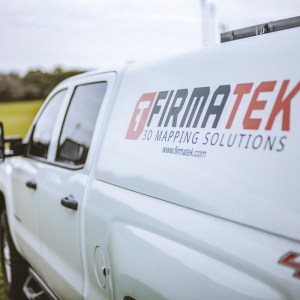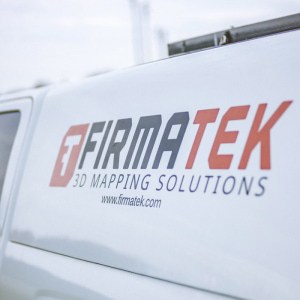From assessing stockpile size to detecting thermal heat, drones can assist in collecting data that’s more detailed and insightful than ever before. In addition to improving daily operational efficiency, drones can also mitigate environmental risk, save capital and make job sites exponentially safer.
To experience these benefits at your company, here’s how get started with your own drone operations.
Using Drones to Get Ahead
Data from drones helps waste companies complete each project more efficiently from the beginning. As explained by Andrew Kahler of John Deere drones streamline the grading process.
Traditional grading processes prepare the ground for operations by using large equipment over the course of several weeks. With drones, however, this process can be streamlined by way of a topographic survey and 3D model.
Drones also aid in better collection of the three V’s — volume, velocity, and variety. Waste Dive writer Kristin Musulin reports that these three elements are essential to assessing and analyzing workplace operations. Using drones to capture such critical information is much more affordable than hiring a manned flight and often leads to more detailed data collection.
Improved Landfill Operations
Adopting drones into everyday workflows can greatly improve operations. Michael Singer tells Waste360, that landfill managers can gain a comprehensive overview of their operations more quickly and accurately by using drones than with ground inspections. In turn, this helps companies save time on inspections and move through projects more quickly than counterparts who don’t use drones.
One company taking advantage of these benefits is Gordon Environmental/PSC (Parkhill, Smith & Cooper, Inc.). The merged design and consulting firm deploys a drone to fly over the site and take photos, and then uses another program to combine those photos into one large image. This detailed image is used to assess progress and identify areas that could be improved.
Drones can also provide insight into landfill capacity and help landfill managers predict current and future needs. Stephen O’Meara, CIO at Ada County, Idaho, adds that drones help monitor how much material is being added to a new landfill cell, how that new cell is growing and what groundswell, compaction and erosion look like across the entire landfill.
This helps waste management companies create new cells accurately and without delay. Such information also helps mitigate environmental risk, ensure compliance with regulations, and allows expansion at a safe rate Commercial UAV News writes.
Testing Accuracy
In addition to measuring dry stockpiles, drones can also evaluate liquid elements. Australian news site The Lead explains that amphibious drones can improve the efficiency of water testing. These underwater drones can collect and test samples from wastewater plants, chemical spills, reservoirs and more. With an easier way to test liquids more often, waste companies can make more accurate assessments.
Municipal Sewer & Water Magazine adds that amphibious drones can also check seals on water control gates and check underwater lines for leakages. Instead of sending down dive teams or having inspectors trudge through wetlands, several feet deep, drones and submarine units collect and send information to smartphones, tablets and laptops, where engineers can identify problems.
Stronger Proposals
Jennifer Castenson, the director of thought leadership for Hanley Wood, adds that drone data also helps waste companies determine a project’s scope. Sales teams typically rely on a set of drawings to propose the project terms to the client. If these drawings turn out to be inaccurate, clients don’t get what they see, which can lead to conflict and loss of capital. Drones, however, have a much higher level of accuracy that reduce this risk.
Another way that drones improve proposal accuracy — and predict future trends — is their ability to create time lapse videos. Drone operations software company Skyword explains that drone videos can be stitched together to better coordinate project logistics. This makes it easier to visualize past, present and future project status, which can be helpful when working with other commercial companies or with clients. Dronenthusiast points out that these images are irreplaceable when working with partners who are based remotely, because they enable partners to keep tabs on the project and ensure everything is being executed according to plan.
Reduced Waste and Environmental Impact
One reason for landfill inspections is to check for environmental risk, which can be detrimental to both a company’s financials and the earth itself. With drone mapping, however, landfill managers can identify wastewater and other environmental aspects that are costly to clean. Improved site inspections can reduce cleanup costs and keep processes on schedule.
Although commercial waste has a negative impact on both financials and the environment, Fortune writer Clay Dillow explains that drones can be used to reduce this building-related solid waste. Dillow says that certain drone software can be used to create 3D structural models and volumetric measurements, which aids in monitoring stockpiles. This is important for measuring resources like sand and gravel, which are especially costly.
Improved Safety
With reduced risk and improved workforce safety, waste companies can move ahead of competitors still held back by avoidable mistakes. According to David Biderman, executive director of the Solid Waste Association of North America, “we are beginning to see more widespread use of drones for surveying and monitoring conditions at landfills…it’s fascinating, and can be a useful way to reduce safety risks.”
How exactly can drones improve landfill safety, mitigate risk and prevent accidents? According to MSW Management, drones are becoming a popular tool for inspecting areas that are unsafe for humans to traverse (such as a transfer station at a waste to energy plant). They can also assess areas where hazardous material has spilled.
Thermal Heat Detection
Another drone feature that’s helpful is the ability to detect heat. Colin Snow, CEO and founder of Skylogic Research, says that some drones have thermal imaging cameras. These images take high quality images that inspectors and managers can then use to detect temperature variation on a site. Waste management companies and landfills can use this information to predict subsurface landfill fires before they spread, adds Forester Media.
Drones can also help enforce safety regulations through worker education. Pompano Beach-based Current Builders in Florida shows workers 3D models of potential hazard conditions, which helps prevent injuries and accidents before workers even get to the site.
Images by: Florian Pircher, David Mark, NakNakNak


